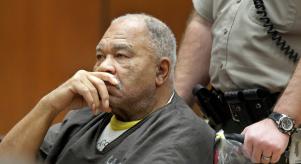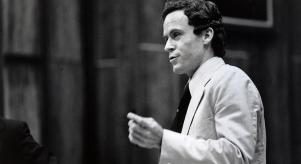
Jack the Ripper's Diary
On the 9th March 1992, it’s alleged that a man called Mike Barrett contacted London literary agent Doreen Montgomery with a question: "I've got Jack the Ripper's diary, would you be interested in seeing it?" A year later, ‘The Diary of Jack the Ripper: The Chilling Confessions of James Maybrick,’ by Shirley Harrison hit the shelves.
Though the Diary was never actually signed by James Maybrick, a wealthy cotton merchant from Merseyside, there were more than enough clues to suspect that he was the sole author. So, James Maybrick’s name was added to the long list of Ripper suspects, a list that included, in no particular order, Lewis Carroll, Oscar Wilde, Queen Victoria’s grandson, Winston Churchill’s dad, an escaped orang-utan and renowned painter, Walter Sickert, who had the dubious of honour of featuring in his very own ‘hedunnit’ bestseller by prolific novelist, Patricia Cornwell.
In her 2002 book, somewhat optimistically titled, ‘Portrait of a Killer: Jack the Ripper - Case Closed’, Cornwell echoes the sentiment of two previous publications (none of which are cited in her book) ‘Jack the Ripper and the final solution’ by Stephen Wright and Jen Overton Fuller’s ‘Sickert and the Ripper Crimes’, but fails to make a cohesive case for her suspect, especially in the light of evidence that shows that Sickert was probably in France when four out of the five Ripper murders took place -Cornwell, of course, refutes this. In investigating material for ‘Portrait of a Killer’, Cornwell spent over £2m buying up at least thirty-two of his paintings, some of his letters, his writing desk, and was accused of physically destroying a painting to glean some conclusive DNA, and to this day maintains that some of the Ripper letters were not a hoax but actually penned by Sickert. Indeed, her unwavering belief in the fact that Sickert was the Ripper is neatly summed up in the title of her 2017 sequel: ‘Ripper: The Secret Life of Walter Sickert’, which was greeted with similar scepticism.
Books on Jack the Ripper have this effect; he’s a global phenomenon, anything written about him will be broken down into atoms and pored over indefinitely, so the provenance of Jack the Ripper’s supposed diary was questioned from the start.
The diary, at 9,000 words, is a handwritten confession to bloody murder and duly signed, ‘yours truly, Jack the Ripper’ and dated May 3rd 1889. It describes the slaughter of innocent women in gruesome detail and includes some facts that, in theory, could only have been known by the police or the perpetrator. But, in addition to contradictory material analysis, it was Mike Barrett, a former scrap-metal dealer and part-time freelance writer from Merseyside, that failed to convince the Ripperologists -and yes, they do exist.
Barrett told the press that he obtained the diary via a now-deceased family friend by the name of Mr Devereux, but Barrett’s then-wife, Anne, claimed that the diary had been in her family ‘for as long as she could remember’, and it was she who gave the book to Mr Devereux to give to her husband and inspire him to write a book on the subject. When she was asked why she didn’t just give the book to Mike herself, Anne suggested that she didn’t want Mike asking her estranged father any questions about it, to complicate matters further still, Barrett then confessed to having written the diary by dictating it to his wife in whose hand, he said, the diary was penned, before withdrawing the confession and slipping out of the spotlight.
On the back of this alone it will come as no surprise that the book was, largely, condemned as a hoax, but the publisher of ‘The Diary of Jack the Ripper,’ and owner of the diary, Robert Smith, wasn’t ready to throw in the cloak just yet. By working with research undertaken by Keith Skinner -a crime historian and author- and one Bruce Robison, Smith got the lead he was after in the time sheets of a fabrications company, Portus & Rhodes Ltd., that revealed they’d employed three electricians to work in James Maybrick’s former home on the very same day Barrett contacted Doreen Montgomery. According to Smith, on the 9th March 1992, three electrical contractors discovered a diary concealed under the floorboards of Maybrick’s bedroom, located in the Merseyside suburb of Aigberth. One of the electricians passed the diary on to a colleague, Eddie Lyons, who in turn presented the book to a drinking acquaintance, a larger-than-life character who fancied himself as a writer (he’d written articles for ‘Celebratory’ magazine and had puzzles published in a kids’ TV mag called ‘Look-In’) by the name of Mike Barratt.
As an aside, six years after the publication of the Diary, and now divorced from Mike, Anne Barrett co-authored her own book under her maiden name of ‘Graham’, ‘The Last Victim: The Extraordinary Life of Florence Maybrick, the Wife of Jack the Ripper,’ with a forward by Keith Skinner. Anne’s research led her to believe that she was actually related to Florence Maybrick, which could be seen as being a little more than just a coincidence.
With the provenance of the Diary potentially re-established, Smiths’ 2017 book, ‘25 Years of The Diary of Jack the Ripper: The True Facts’ puts James Maybrick back in the picture as the prime Ripper suspect, and there he sits, rather uncomfortably according to Bruce Robinson.
James Maybrick’s business required him to travel frequently to the United States, on one such visit he contracted malaria, the prescribed medicine containing arsenic which he became addicted to until his death. He met his American wife-to-be, Florence on a trip back to Liverpool and despite their age gap, she was eighteen, he forty-one, they married and settled down. When Maybrick died aged fifty, Florence was arrested and put on trial for his murder. Despite the trail being a sensation on both sides of the Atlantic, it was also widely regarded as corrupt, in short, there wasn’t sufficient evidence Florence poisoned her husband with arsenic and her defence barrister, Sir Charles Russell QC, was an acquaintance of James’ brother Michael Maybrick. All of the men in question included the judge, chief counsel for the crown were Freemasons. Robinson claims that James Maybrick was killed by laudanum administered by Edwin Maybrick, his brother -with whom Florence had an affair before jilting him- orchestrated by Michael who even gave evidence against Florence at her trial.
In her day, Florence was very beautiful and, like her husband, unfaithful. In the diary, the author cites this infidelity as his reason for his murderous spree and alludes to the initial ‘FM’, possibly written in blood, at the scene of Mary Kelly’s murder. In addition to confessing to the five Whitechapel murders ‘James’ also admits to the murder of two other unidentified women in Manchester. Florence publicly referred to Michael as ‘brute’, the aspect of the diary in which ‘James’ blames his wife for his hatred of women and the subsequent war he waged upon them can easily be read as the thoughts of Michael as he thoroughly despised her.
Theoretically, killing James and having his wife hanged for murder would have served Michael very well, his brother out the way, replaced by a scapegoat and Florence taken care of by the state, Michael could continue to kill without suspicion. But Florence wasn’t executed, her death sentence was changed to life imprisonment, of which she only served fourteen years. This could indicate that she might have known something about the killer and was advised to keep quiet in exchange for her liberty. Following her release, she returned to America where she died in 1941 with her secrets.
Bruce Robinson is better known as the writer and director of cult-classic, Withnail and I. Robinson, author of ‘They All Love Jack: Busting The Ripper’ inadvertently become a Ripper expert some fifteen years ago following a challenge from his former-actor-friend turned crime sleuth, the omnipotent Keith Skinner.
Robinson’s starting point in his theory that Michael Maybrick, not his brother James, was the killer was aroused by the strange actions of the man in charge of the investigation, Sir Charles Warren. Why had Sir Charles rushed to this crime scene (allegedly he wasn’t present at any others) in the early hours of the morning to effectively destroy vital evidence by ordering the immediate removal of ‘The Juwes are the men that will not be blamed for nothing’ that’d been scrawled on a wall close to the remains of Catherine Eddowes? It’s been argued that the ‘Juwes’ in this instance isn’t an incorrect spelling of ‘Jew’, but a reference to a story central to Monastic beliefs that tells of three murderous Jews, Jubela, Jubelo and Jubelum, who were brutally executed by King Solomon. At the time his actions were a scandal, the press accusedthe police of exhibiting ‘an incapacity that amounts to imbecility’ to an outraged public. Sir Charles resigned just before the murder of the last of the five canonical Ripper victims, Mary Kelly, leaving an order that if another victim was found nobody was to enter the scene until he arrived.
Sir Charles, virtually all the top brass involved in the investigation were Masons. Robinson argues that the graffiti -among other details regarding the horrific way victims were dismembered alongside various items left at the crime scene- was the Ripper’s method of telling fellow freemasons that he was a brother and for the sake of their whole organisation, to cover up his crime. In short, he was effectively allowed to kill with impunity.
Possibly the most staggering revelation is that Michael Maybrick was, in his day, a bona fide superstar. He was a celebrated singer and songwriter, author of a beloved tune entitled, ‘The Holy City,’ the most popular song of the 19th century which sold a million copies in sheet music. Robinson believes that he’s relatively unheard of today because the Masons’ did discover Michael’s identity and, save a few passing paragraphs, effectively erased him from their history though, somewhat ironically, the song, ‘They All Love Jack’ (the cunning title of Bruce Robinson’s book) is the only Maybrick song to transcend the mists of time. Dame Vera Lynn and Charlotte Church have both recorded versions of this charming little ditty.
Predictably, Robinson’s book has been received with both scepticism and certitude. Of course, there are theories and suppositions based upon a subjective understanding of the case, but there is also a lot of evidence to support his argument that it was Michael who killed his brother, James and penned the contentious diary to put him in the frame and draw attention away from his guilt. If nothing else, Robinson noted the diary was written in three acts, not that this fact alone necessary implies Michael, and even if Michael hadn’t written the diary he’s still somewhat in the picture. However, the Ripper letters are, potentially, of greater significance: Robinson, like Cornwell, also refutes the notion that all the Ripper letters are a hoax with some written by Michael Maybrick (not Walter Sickert) as many of the dates and postal marks correspond with a concert or public appearance, putting him in the vicinity terrible crimes, including the appalling murder of a seven year old boy, Johnnie Gill, who appeared to have been ritually killed.
So, what of Michael Maybrick after the Whitechapel murders? We know that in March 1893 he moved with his wife, a former housekeeper, to the Isle of Wight, and seven years later appointed mayor of Ryde. Of course, we can never know with one hundred per cent certainty that Michael Maybrick was Jack the Ripper, indeed, virtually everything written on Jack the Ripper is contentious usually leading to bitter altercations and unpleasant exchanges on forums: the poor victims, impoverished and vulnerable, are all but forgotten, forever denigrated as destroyed bodies at the hands of an evil psychopath.
What we do know with certainty is that forged or fake diaries are nothing new and can be a good source of revenue. In 1967 the Mussolini diaries were offered to the Sunday Times for a quarter of a million pounds, then in 1983, Rupert Murdoch spent three million pounds acquiring Hitler’s diaries. Both were quickly proven to be fakes, though the authenticity of the Maybrick diary is still in question after twenty-five odd years, much to the advantage of a handful of authors and publishers.
As to the authenticity of the diary, along with the identity of Jack the Ripper, when push comes to shove, I don’t think we’re supposed to know the answer.




